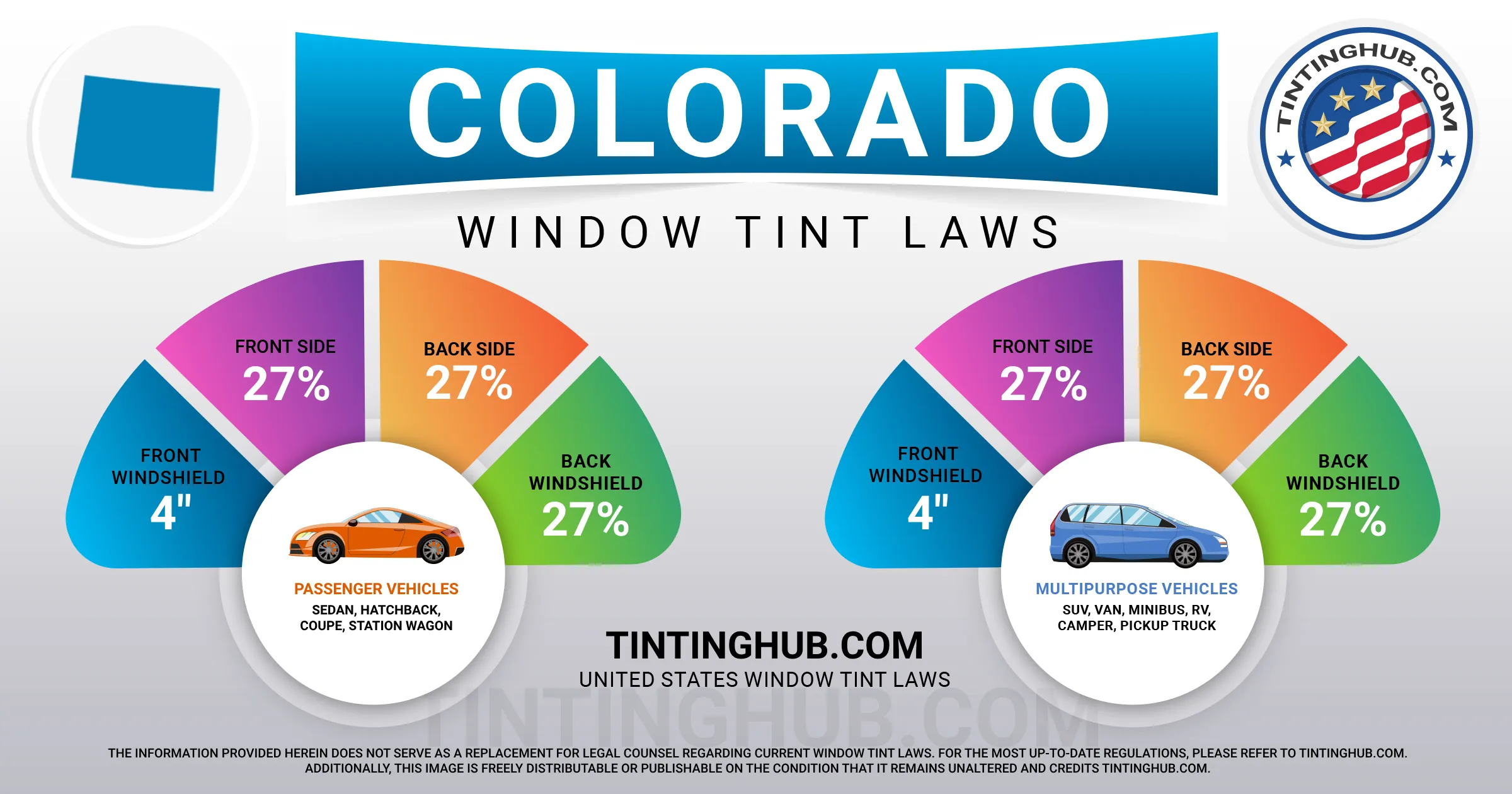Colorado Window Tint Laws (Last Update 2024)

When it comes to car window tinting, understanding the laws in your state is crucial. Colorado enacted these regulations in 1995 to enhance the safety and visibility of drivers on the road. In this article, we provide you with all the essential information you need about car window tinting in the Centennial State, including the permissible tint darkness and reflection, along with other relevant rules and guidelines.

Colorado Window Tint Darkness Regulations
VLT: Visible Light Transmission
VLT, or Visible Light Transmission, denotes the percentage of visible light that your car windows permit. Colorado has specific regulations for sedan cars and SUVs or vans.
Tint Darkness for Sedans:
- Windshield: Non-reflective tint with a 70% VLT is allowed on the top 4 inches.
- Front Side Windows: These windows must allow more than 27% of light to pass through.
- Back Side Windows: Must allow more than 27% of light to pass through.
- Rear Window: Must allow more than 27% of light to pass through.
Tint Darkness for SUVs and Vans:
- Windshield: Non-reflective tint with a 70% VLT is allowed on the top 4 inches.
- Front Side Windows: These windows must allow more than 27% of light to pass through.
- Back Side Windows: Must allow more than 27% of light to pass through.
- Rear Window: Must allow more than 27% of light to pass through.
It’s important to note that if the front side windows and windshield have over 70% VLT, the windows to the back of the driver (rear window and back side windows) may have any tint darkness.
Window Tint Reflection Regulations in Colorado
Window tint can effectively reduce glare and heat by reflecting incoming light. Colorado law allows window tint to have a certain level of reflection, and it’s essential to adhere to these guidelines.
Tint Reflection for Sedans:
- Front Side Windows: No metallic or mirrored appearance is permitted.
- Back Side Windows: Similar to the front side windows, no metallic or mirrored appearance is allowed.
Tint Reflection for SUVs and Vans:
- Front Side Windows: These windows should not have a metallic or mirrored appearance.
- Back Side Windows: The same rule applies to the back side windows of SUVs and vans.
Additional Colorado Window Tint Regulations
Apart from darkness and reflection, Colorado has several other important laws and regulations concerning window tinting. These include:
Side Mirrors: If your back window is tinted, dual side mirrors are required for added safety.
Restricted Colors: The tint color(s) of RED and AMBER are not legal according to state law.
Certificates: Film manufacturers are not obliged to certify the film they sell in Colorado.
Stickers: While state law recommends the use of stickers to identify legal tinting, it is not mandatory.
Medical Exceptions: Colorado law does NOT allow medical exemptions for the use of special tint.
Penalties: Violating window tint regulations can result in a Class B traffic infraction or even a misdemeanor, with fines ranging from $500 to $5000.
Remember that different counties or places of residence may interpret Colorado’s tinting laws and regulations differently. Therefore, it’s advisable to double-check this information with your local DMV or law enforcement authorities.
Please note that we last updated our information about window tint laws in Colorado in 2024. We strive to provide accurate and up-to-date information, but if you come across any discrepancies or outdated details, don’t hesitate to contact us so we can make the necessary corrections. We take pride in being a trusted industry leader in offering precise and reliable information on window tint laws. Your safety and compliance with the law are our top priorities.